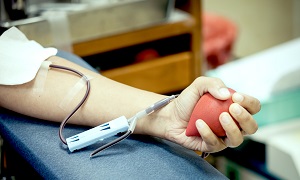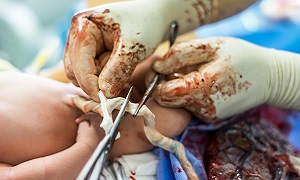What is Bone Marrow Transplant?
Bone Marrow Transplant, also called Stem Cell Transplant is a medical procedure recommended in case of bone marrow damage. The main aim of the medical procedure is to replace a part of the bone marrow that has been destroyed due to some disease, infection or due to chemotherapy. However, you should keep in mind that this is not a surgical procedure but a medical procedure that involves transplanting the blood stem cells flowing to the bone marrow.
The replacement of the blood stem cells promotes the growth of new blood cells and tissues around the bone marrow which in turn promotes prompt recovery of the damaged area. This is primarily why this procedure is also known as the Stem Cell Transplant.
When is a Bone Marrow Transplant recommended?
The bone marrow produces healthy blood cells that circulate the body. The Bone Marrow Transplant is often recommended when the bone marrow diverts or ceases functioning.
Types of Bone Marrow Transplant
There are three major types of Bone Marrow Transplant:
- Allogenic bone marrow transplant
- Autologous bone marrow transplant
- Umbilical cord blood transplant
Autologous Bone Marrow Transplant
The Autologous bone marrow transplant is based on stem cells being obtained from the patient’s body before they are subjected to any medical procedures like chemo or radiation therapy. The term “Auto” stands for “self” which means the stem cells extracted from the patient is refrigerated and when the time comes are injected back into the body.
This type of transplant is also known as a rescue transplant.
Allogeneic Bone Marrow Transplant
The Allogeneic bone marrow transplant is based on stem cells obtained from another person, usually known as the “donor”. The term “Allo” stands for “other”, which means stem cells are donated by the “donor” after some clinical tests are performed to ensure the donor is a good match for the “receiver” or the patient.
Donors, in this case, can be either be related to the patient by blood or can be an unrelated match found through the national bone marrow directories.
Umbilical cord blood transplant
The Umbilical cord blood transplant is a type of allogeneic transplant where the stem cells are extracted from a newborn baby’s umbilical cord right after his/her birth. The stem cells are then frozen and stored until a transplant is required.
However, the stem cells extracted from the umbilical cord are usually small in number which is why the recovery might take longer than the other procedures. The positive aspect of umbilical cord blood transplant is that, due to its pure nature, cord blood stems usually don’t have to undergo too many clinical matching tests.
Common diagnostic tests
Usually, a blood test or a bone marrow biopsy is done to determine whether the Bone Marrow Transplant procedure is necessary or not. Other tests may include Tissue Typing, Pulmonary lung tests, X-ray and PET scan.
Bone Marrow Transplant procedure
Bone Transplant is quite an extensive procedure that takes almost a month. Here is how the procedure flows.
Stem Cell Extraction:
The Bone Marrow Transplant process starts with stem cell extraction. There are primarily three major body parts that provide the best stem cells, namely,
- Blood, which is the most common extraction area for stem cells
- Bone Marrow, extracted from the tail bone area
- Umbilical Cord
Extraction from blood
- You have to take a clinical drug to boost the stem cell count. When the time comes, blood is taken from one arm that flows into a machine which filters out the stem cells. The remaining blood is then pumped out of the machine and in through the other arm.
- The entire process takes about 2-3 hours and is completely painless. Even though no hospital stay is required, you might need to undergo this process more
Extraction from Bone Marrow
- The medical team will extract blood from multiple parts of your hipbone in this process.
- The entire process takes about 1-2 hours and you will be put under local or full anesthesia during the process. However, you might feel soreness for a few days after the procedure.
- The blood extracted will be returned to your body later on through IV as you recover.
Extraction from umbilical cord
The conditioning
Once the stem cells are ready and you’re coming close to your transplant date, you have to undergo a procedure called Conditioning which mostly includes chemo or radiation therapy. This procedure is done to kill any traces of damaged or infected cells in your blood. Conditioning also proactively helps in lowering the immunity levels in your body and makes more space for new cells to enter.
The process can be a one-time procedure or split over a few days based on your body’s reaction and the type of conditioning or bone marrow transplant procedure you’ll undergo.
Based on the intensity of your medical condition along with other parameters such as age, body’s immune system and more- doctors may recommend a reduced dose of chemo or radiation therapy during the conditioning process, which is better known as Reduced-intensity conditioning.
Day Zero of Bone Marrow Transplant
A few days after your conditioning, the Transplant takes place. The day of the transplant is also known as day zero takes place in a medical institute under the supervision of the hematology team.
The new stem cells are passed on to you through a thin tube called the central line which will be attached to a vein in your chest. The process may take up to a couple of hours but the entire process is absolutely painless and you’ll be awake and in your senses throughout the procedure.
The effect, however, starts showing after a few days of the transplant.
Possible side-effects of Transplant
Often frozen stem cells contain a preservative in them which may or may be responsible for certain side-effects. The doctors will prescribe medicines and recommend extra fluids to flush the preservatives out of your system. Nevertheless, the most common side-effects of the preservatives can be in the form of
- Fever and Nausea
- Chills
- Hives
- Chest Pain
- Headache
- Difficulty breathing
General Bone Marrow Transplant side-effects
Patients might experience mild to moderate side-effects that show up a few days from the day of the transplant or the conditioning. These can be in the form of,
- Diarrhea
- Mouth ulcers and sores
- Sudden Bleeding problems
- Fatigue and nausea
- In case your getting cells from a different donor, you might be prone to GVHD or Graft-versus-host disease where the new stem cells treat your body like a foreign antibody and attack.
Post-transplant care
What patients need the most after their bone marrow transplant is the love, care and support from close family members and friends. Here’re a few home care pointers to keep in mind-
- Ask your doctor for a detailed diet chart along with restrictions such as no smoking or drinking alcohol clearly mentioned.
- Avoid weight gain after your transplant procedure
- Exercise regularly to maintain your weight but make sure you do it in moderation.
- Make sure you take doctor follow-ups seriously
FAQs on Bone Marrow Transplant
Bone Marrow Transplant requires about 3-4 weeks’ stay in hospital and about 2 months stay in India for routine follow-ups.
Only 2-4% of bone marrow donors are known to face complications after donation. However, very rare cases of long-term complications have been recorded.
Bone marrow transplant is usually done under local or full anaesthesia and hence, the procedure will be completely painless for you. However, side effects after the transplant can affect the patient and hence precautionary measures should be taken.
Only 4-6% of the donor’s bone marrow is extracted for the procedure and the body regenerates the lost amount within 4-6 weeks. The donor’s immune system is often unaffected which means your recovery rate as a donor will depend on your immune system.
The whole point of getting a bone marrow transplant is to eliminate the cancer cells (for cancer cases) or to prolong life. However, in some cases, cancer may come back and a second transplant may be recommended in such cases.
In rare cases, the patient’s immune system may reject the new stem cells which will result in transplant failure. In such cases, more donor stem cells are required for a second shot at transplant.
The donor match process is quite detailed with additional testing done to ensure the best match of the lot is selected for the procedure. The chances of finding the right match cannot be predicted as such.




